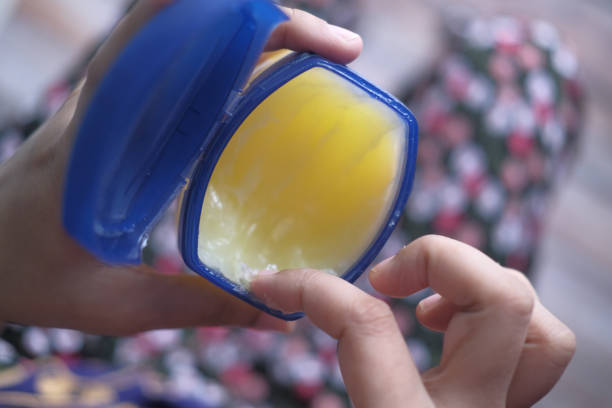Vaseline is a household name when it comes to skincare products. It’s been around for over 150 years and has been used as an effective moisturizer, ointment, and lip balm. However, there has been a debate on whether or not Vaseline clogs pores, which can cause acne breakouts. In this article, we’ll explore the truth behind this popular skincare myth.
What is vaseline?
Vaseline, also known as petroleum jelly, is a semi-solid mixture derived from petroleum. It was originally developed as a medical-grade product over a century ago and has since found its way into various skincare and cosmetic applications. Vaseline is prized for its exceptional skin-hydrating and protective properties. It acts as a barrier that locks in moisture, preventing water loss from the skin and creating a protective shield against harsh environmental conditions.
This versatile product is commonly used to soothe dry, chapped skin, relieve minor cuts and burns, and as a base ingredient in various skincare and beauty products due to its emollient and occlusive qualities.
Does Vaseline Clog Pores?
Vaseline comedogenic rating is 0, meaning that it is less likely to clog pores and cause breakouts. However, it is important to note that everyone’s skin is different, and what works for one person may not work for another.
Numerous case studies have been conducted to determine if Vaseline clogs pores. The results of these studies indicate that Vaseline does not clog pores. In fact, dermatologists often recommend Vaseline as a safe and effective moisturizer for people with dry skin or eczema.
One study published in the Journal of the American Academy of Dermatology found that petroleum jelly (the main ingredient in Vaseline) does not promote the formation of pimples or acne. Another study in the British Journal of Dermatology found that Vaseline was more effective at preventing water loss from the skin than other moisturizers.
How to apply Vaseline on your skin properly
Start with Clean Skin: Before applying Vaseline, make sure your skin is clean and dry. Gently wash the area you want to moisturize with a mild cleanser and pat it dry.
Take a Small Amount: You only need a small amount of Vaseline to moisturize your skin effectively. Use your fingers or a clean, dry spatula to scoop out a small portion of Vaseline from the container.
Warm It Up: If the Vaseline is too thick or cold, you can warm it slightly by rubbing it between your fingers. This makes it easier to spread and apply evenly.
Apply Evenly: Gently spread the Vaseline over the desired area of your skin using a circular or upward motion. Ensure even coverage but avoid using too much, as a little goes a long way.
Massage It In: If you’re using Vaseline for a massage or as a moisturizer, gently massage it into your skin using light pressure. This can help improve blood circulation and relaxation.
Allow It to Absorb: Vaseline forms a protective barrier on the skin, sealing in moisture. Allow it to absorb fully before dressing or going to bed to prevent staining your clothes or bedding.
Use Sparingly on the Face: While Vaseline can be used on the face, it’s advisable to use it sparingly, focusing on dry patches or areas that need extra moisture. Avoid applying it all over the face if you have oily or acne-prone skin.
When You should Not Use Vaseline
While Vaseline is a versatile and effective product for many skin care purposes, there are specific situations when you should avoid using it. First and foremost, do not use Vaseline on open wounds, cuts, or burns, as it can trap bacteria and delay the healing process. Additionally, if you have acne-prone or oily skin, it’s advisable to use Vaseline sparingly on your face, as it can clog pores and potentially lead to breakouts. Lastly, if you have an allergy or sensitivity to petroleum-based products, it’s essential to steer clear of Vaseline and opt for alternative skincare products that suit your skin type and condition. Always consult with a dermatologist or healthcare professional if you have concerns or specific skin conditions that may require specialized care.
Tips & Precautions
- Use a small amount: You don’t need to slather on a thick layer of Vaseline to moisturize your skin. A pea-sized amount is usually enough.
- Avoid applying to acne-prone areas: While Vaseline won’t cause acne breakouts, it can trap bacteria and oil on the skin’s surface. Avoid applying it directly to areas where you have active acne.
- Don’t use it on broken or irritated skin: If you have cuts, burns, or other skin irritations, avoid using Vaseline until the skin has healed.
- Choose fragrance-free: Some fragrances can irritate the skin, so it’s best to choose fragrance-free Vaseline if you have sensitive skin.
FAQs
- Is Vaseline good for dry skin? Yes, Vaseline is an effective moisturizer for dry skin. It helps to lock in moisture and prevent water loss from the skin.
- Will Vaseline cause acne? No, Vaseline is non-comedogenic and does not clog pores, so it won’t cause acne breakouts.
- Can I use Vaseline on my face? Yes, Vaseline can be used on the face as a moisturizer. But, avoid applying it directly to areas where you have active acne.
- Can I use Vaseline on my lips? Yes, Vaseline is an effective lip balm and can help to keep your lips moisturized and healthy.
- Is Vaseline safe to use during pregnancy? Yes, Vaseline is safe to use during pregnancy. However, it’s always best to consult with your doctor first if you have any concerns.
Final Takeaway
The myth that Vaseline clogs pores is just that – a myth. Numerous studies have shown that Vaseline is non-comedogenic and does not cause acne breakouts. In fact, it’s a safe and effective moisturizer for people with dry or sensitive skin. Just remember to use a small amount, avoid applying it to acne-prone areas, and choose fragrance-free if you have sensitive skin.







